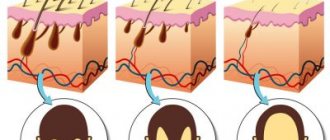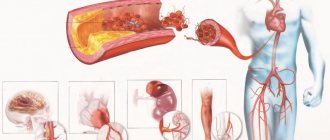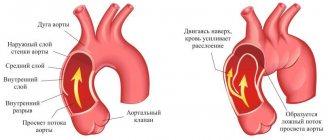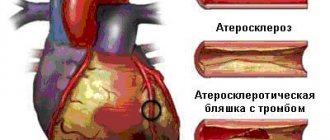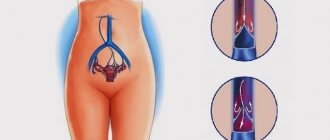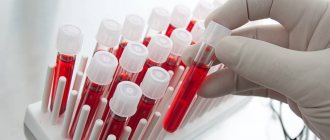Low pressure indicators
Hypotension is a cardiovascular disease that occurs with a decrease in blood pressure (BP) and various autonomic disorders. The pathology, also called hypotension, is considered no less dangerous than hypertension.
In the event of a significant decrease in blood pressure, a serious threat to life may occur, requiring emergency medical measures.
Hypotension is diagnosed in the presence of certain tonometer indicators. There are different numbers for men and women indicating the presence of low blood pressure:
| Patient gender | Blood pressure indicators in mm Hg/st. |
| Male | Below 100/60 |
| Female | Less than 95/60 |
Sometimes a decrease in blood pressure is perceived as normal and classified as physiological (genetic) hypotension. Patients with such hypotension include people who have an innate tendency to fall in blood pressure, who are able not to notice it and feel normal.
A pathological drop in blood pressure, which is not normal for a person and is accompanied by negative symptoms, is considered more dangerous.
Why does hypotension develop?
When hypotension is a concern, the causes of the disorder can be varied. Experts name the following factors leading to low blood pressure:
- Heart pathologies (failure, bradycardia, valve system abnormalities).
- Endocrine diseases (hypothyroidism, diabetes, hypoglycemia).
- Adrenal insufficiency.
- Heavy blood loss.
- Inactive lifestyle.
- Poor food.
- Dehydration.
Common causes of low blood pressure in women are pregnancy, anemia, and pathologies of the digestive system. The disorder is often detected in patients over 45 years of age, whose body is experiencing decline in reproductive function and produces fewer hormones.
Hypotension in men can be associated with frequent alcohol consumption and work in hazardous conditions. Sometimes hypotension is recorded in athletes. In this case, low blood pressure acts as a protective reaction of the body to intense physical activity.
Low blood pressure in children is observed with a constant lack of oxygen, against the background of hypo- or vitamin deficiency, and infectious diseases. In adolescents, the disorder appears due to hormonal and physiological changes and impaired metabolism.
At any age, hypotension can be provoked by traumatic brain injury, bronchial asthma, drug intoxication, allergic reactions, and mental overload.
Classification
What it is, arterial hypotension, is probably clear to everyone - it is an excessive decrease in normal blood pressure readings. Next, you need to talk about the different types of disease into which doctors divide it:
- Acute hypotension is a sharp drop in blood pressure that requires emergency medical attention. It appears during myocardial infarction, severe heart rhythm disturbances, allergies, loss of large amounts of blood, blockage of the pulmonary artery, etc.
- Physiological or chronic hypotension is recorded in people with a hereditary predisposition when the tonometer readings remain at 100/70 and do not fall below these limits. It is also diagnosed in athletes who constantly experience cardio stress and the release of adrenaline into the blood; for them this condition is natural.
- Idiopathic or primary hypotension is an independent pathology in which a neurosis-like state of the brain centers responsible for the motor activity of blood vessels manifests itself. It can develop as a result of prolonged stress and excessive psychological stress.
- Secondary hypotension develops simultaneously with existing disorders in the body. These may be osteochondrosis of the spinal column in the cervical region, rheumatism, stomach ulcers, kidney disease, bladder disease, and pathologies of the cardiovascular system. Also, a secondary drop in pressure is observed in patients with diabetes mellitus, cirrhosis of the liver and gallbladder diseases, pathologies of the endocrine system, oncology, alcoholism and drug addiction.
Hypotension can occur as a result of a lack of vitamins E, B and C, with a sharp change in climatic conditions, as well as as a result of impaired vascular tone. If normally capillaries in emergency situations should quickly respond to changes in external and internal factors by expansion or contraction, then when tone is lost, the reactions slow down.
As a result, the body experiences a lack of oxygen, the brain and heart muscle suffer and cannot function optimally. It is not possible to treat hypotension with medication. There are some medications to increase blood pressure, but they can only be used after a full examination and identification of the cause of this condition.
Symptoms of arterial hypotension
The main symptoms of hypotension take the form of:
- throbbing pain in the back of the head, temples;
- dizziness;
- darkening of the eyes;
- lack of oxygen;
- rapid heartbeat;
- nausea;
- chest pain;
- coldness or numbness of the feet and hands;
- general weakness;
- drowsiness;
- decreased performance.
When blood pressure drops, a person is bothered by thirst and blurred vision may occur. With a significant decrease in blood pressure, semi-fainting states or full-blown fainting develop.
Hypotension is characterized by a slowdown in blood flow in the body, leading to forced passivity, weakening of memory, absent-mindedness, and apathy. Unlike hypertensive patients, people suffering from hypotension are more susceptible to depression, emotional instability, causeless irritability, and mood swings.
Causes
A concern for predominantly young people, low blood pressure occurs as a result of the following provoking factors:
- infectious diseases that occur latently or explicitly in the body;
- iron deficiency;
- diseases of the gastrointestinal tract;
- allergy;
- psycho-emotional stress, stress;
- physical overload;
- hepatitis;
- renal failure;
- decreased tone of blood vessels;
- vegetative-vascular dystonia.
Diagnosis and treatment of hypotension
The examination and treatment of hypotensive patients is carried out by a therapist or cardiologist. To establish the correct diagnosis, the following diagnostic procedures are performed:
- daily monitoring of blood pressure indicators;
- blood tests;
- ECG;
- orthostatic test;
- EEG;
- echocardiography.
In many situations, patients require consultation with other specialists - an endocrinologist, a neurologist, an ophthalmologist.
Treatment of low blood pressure is based on an integrated approach. This implies prescribing special medications to the patient, physiotherapeutic procedures, recommendations for correcting lifestyle, and the use of folk remedies for hypotension .
Low blood pressure medications
To return blood pressure to normal levels, drugs such as antioxidants, cerebroprotectors, nootropics, and antidepressants are used. The therapeutic course for patients suffering from hypotension is based on the following:
- Citramona.
- Saparala.
- Ortho-taurine.
- Midodrina.
- Nootropil.
- Pentalgina-N.
- Saridona.
- Askofena.
The listed drugs for low blood pressure can enter the patient’s body in various ways, among which oral and injection predominate. The dosage of drugs, the frequency of their use and the duration of the treatment course are determined by the doctor.
Physiotherapeutic procedures for hypotension
If the degree of impairment is minor, physiotherapy can be used as the main method of influencing the hypotonic body. In difficult cases, procedures are used as an additional method of treatment, and are prescribed after improvement in general well-being.
Electrophoresis sessions, therapeutic massage and exercise therapy, phonophoresis, baths enriched with oxygen, hydrogen sulfide, and sodium chloride composition are effective. In case of hypotension, such procedures increase vascular tone and normalize general blood circulation.
Correction of lifestyle
Persons suffering from hypotension must learn to plan their day, rationally allocate time for activity and rest. Patients with low blood pressure are recommended:
- avoid lack of sleep by getting 8-10 hours of uninterrupted sleep every day;
- lead an active lifestyle;
- avoid strong, prolonged stress;
- practice available sports.
For hypotension, walking barefoot and gradual hardening are useful. With the onset of cold weather, it is necessary to avoid hypothermia (primarily in the area of the lower extremities and head).
Symptoms
- Signs of acute hypotension
Acute hypotension is caused by oxygen starvation, due to which signs of hypotension develop such as:
- Dizziness;
- Short-term visual disturbances;
- Pale skin;
- Loss of consciousness;
- General weakness;
- Fatigue.
It is necessary to know what to do in case of hypotension, since acute hypertension often ends in death for the victim. To provide first aid to the victim, you need to perform the following steps:
- Call emergency medical assistance.
- If there is bleeding, stop it.
- Provide access to fresh air.
- Unfasten clothing that is constricting the chest (if the patient is wearing one).
- If the hypotensive person is conscious, then give him special drops (Eleutherococcus extract).
- Signs of chronic hypotension
Symptoms of primary AHT are caused by cerebral hypoxia:
- Loss of strength, weakness, sleep disturbances;
- Irritability;
- Frequent dull, pulsating, bursting headaches, localized mainly in the temporo-frontal, temporo-parietal region;
- During exercise, the heartbeat increases or shortness of breath appears;
- Difficulty waking up in the morning;
- Increased sweating;
- Nausea, dizziness.
With secondary hypotension, the symptoms of the disease that caused the hypotension are expressed. In addition to them, the above-described symptoms of hypotension can be observed in hypotensive patients.
Symptoms such as:
- Menstrual irregularities;
- Problems with potency.
A hypotensive patient experiences drowsiness during the day and wakefulness at night. Therefore, he needs more time to sleep - 8-12 hours. Despite the long period of sleep, he most often feels sleep-deprived, and when he wakes up, he sometimes feels a headache.
In most cases, a person does not notice the course of physiological hypotension (asymptomatic course). The patient becomes ill with orthostatic hypotension (presyncope), as well as when he changes the position of the body in space (from horizontal to vertical).
How to raise blood pressure - actions for exacerbation of hypotension
If the tonometer readings do not correspond to the norm, you should know - low blood pressure, what to do at home urgently. In such a situation, you should relieve the victim of oppressive clothing that prevents deep breathing, give him a horizontal position, and ensure an influx of oxygen by opening the window slightly. To improve blood supply to the brain and prevent loss of consciousness, the legs should be placed above the level of the head (by placing a cushion under them).
Next you will need:
- turn the patient's head to the side, cover him with a warm blanket;
- massage the ears;
- ask the victim to take deep breaths;
- provide the patient with a drink that increases blood pressure (red wine, strong tea with sugar, coffee are suitable);
- in case of fainting, give the patient a sniff of ammonia.
In case of low blood pressure, ordinary homemade brine containing a large amount of salt can provide quick help. It is recommended to drink it little by little, with short breaks.
If after the measures taken there are no positive changes, you should call an ambulance at home. It is not advisable to give any medication to a patient without consulting a doctor.
First aid
Self-medication for such a disease is life-threatening, since improper use of medications leads to death. In this case, it is necessary to call an ambulance as quickly as possible and wait for a doctor’s appointment.
First aid algorithm for fainting
To alleviate the condition of the victim, it is necessary:
- Place him in bed on a low pillow;
- Ventilate the room;
- Apply a cool compress to your forehead;
- Provide a calm atmosphere for the patient.
Since self-administration of medications for drug-induced hypotension is not recommended, you can give the patient a cup of warm green tea with lemon or a glass of warm milk with honey. Drinks will help increase the tone of the body and slightly normalize a person’s condition.
Important! In this condition, you should not drink cold or, conversely, hot drinks. They can cause vasospasm, thereby worsening the patient’s condition. The temperature of consumed liquids should be within 25-30 degrees.
Prevention of low blood pressure
Arterial hypotension is one of the pathologies that can be prevented through effective prevention. To prevent low blood pressure, you should use the following recommendations:
- Avoid physical inactivity.
- Get rid of bad habits.
- Eat nutritiously, giving preference to natural fortified foods.
- Master any of the sports (swimming, race walking, running).
- Monitor the rational alternation of activity and rest.
- Get enough sleep every day.
- Minimize stress as much as possible.
- Take contrast showers regularly.
By adhering to the above points, you can significantly improve the functioning of the cardiovascular system, activate blood flow in the vessels of the brain, and ensure the normal functioning of all organs and systems. This will avoid sudden changes in blood pressure and serious deterioration in health.
If hypotension is a concern, treatment should not be carried out using dubious means, but under the supervision of an experienced doctor. If you are susceptible to a pathological condition, it is necessary to periodically undergo preventive examinations with a cardiologist.
Share:
How to avoid developing a dangerous situation
To avoid the development of hypotension due to medications, it is necessary to strictly control their intake. Additionally recommended:
- Create a competent and rational daily routine.
- Include morning exercises in your daily schedule.
- Walk in the fresh air for at least 25 minutes a day.
- Eat foods that contain a certain set of nutrients.
- Give up those habits that aggravate the course of the underlying disease - smoking, alcohol addiction and abuse of fatty foods.
To be sure of the reliability of medications for hypertension, it is necessary to periodically change them by contacting a specialist. This will help avoid future overdoses and the development of hypotension due to them.

